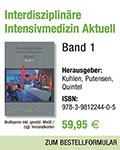

66. Jahrgang - Juni 2025
Patient Blood Management: Herausforderungen und Lösungsansätze der Blutgesundheit
Anämien zählen zu den häufigsten globalen Gesundheitsproblemen. Betrachtet man zusätzlich verwandte Blutgesundheitsstörungen wie Blutverlust und Gerinnungsstörungen, so ergibt sich ein noch größeres Bild: Nach aktuellen Schätzungen sind weltweit mehr als 3 Milliarden Menschen betroffen. Besonders im perioperativen Setting sind Patienten mit Anämie einem höheren Bedarf an Bluttransfusionen und erhöhten Risiko für postoperative Komplikationen ausgesetzt.
Das Konzept des Patient Blood Management (PBM) befasst sich mit diesen Aspekten und bietet Behandlungsmaßnahmen, um wertvolle Ressourcen zu schonen und die Patientensicherheit zu erhöhen. PBM ist ein multidisziplinärer, patientenzentrierter Ansatz zur Optimierung der Blutgesundheit und basiert auf drei Säulen: (1) (präoperatives) Anämie-Management, (2) Minimierung von Blutverlusten und (3) rationaler Einsatz von Blutprodukten. Da die Ursachen von Anämie jedoch multifaktoriell sind, sollte über eine Erweiterung des aktuell bestehenden Behandlungskonzepts, welches sich überwiegend auf die alleinige Substitution eines Eisenmangels fokussiert, dringend nachgedacht werden. Ein intersektorales und interdisziplinäres Vorgehen – insbesondere die Einbindung der hausärztlichen Versorgung – ist essenziell, um die Patientensicherheit, Versorgungsqualität und Ressourceneffizienz nachhaltig zu steigern.
Anaemia is among the most common global health problems. When taking into account related blood health disorders such as blood loss and coagulopathies, the picture becomes even broader: According to recent estimates, more than 3 billion people worldwide are affected. Particularly in perioperative settings, patients with anaemia face a greater need for blood transfusions and increased risk of postoperative complications.
The concept of Patient Blood Management (PBM) addresses these issues by providing therapeutic measures aimed at preserving valuable resources and enhancing patient safety. PBM is a multidisciplinary, patient-centred approach to optimizing blood health and rests upon three pillars: (1) (preoperative) anaemia management, (2) minimization of blood loss, and (3) rational use of blood products. Since anaemia has multifactorial causes, it is essential to consider expanding the existing treatment paradigm, which predominantly focus on iron deficiency therapy alone. An intersectoral and interdisciplinary approach – particularly involving primary care providers – is crucial to sustainably enhancing patient safety, quality of care, and resource efficiency.











